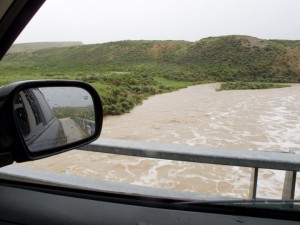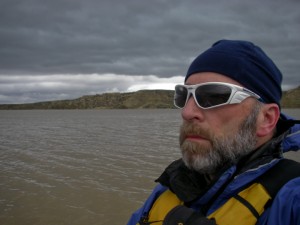This article is about one of the most effective and precise ways to promote your business and find clients. Google Adwords makes advertising easier, faster, and more cost effective than ever before. If you want to, in a couple of hours, you can send a veritable flood of traffic to your site. And if you design your campaign correctly, the vast majority of those visitors will be people who are specifically looking for a photographer doing your kind of work.
So here are some tips on how to get started with Google Adwords and how to make sure you get the biggest bang for your advertising dollars.
Have a good website
Before you start, let me underscore that you need to have a good website. Ideally, you’ll have a great website. With Google Adwords, you will be sending prospective clients to your site. So the overall design and functionality, as well as the images you have in your online portfolio need to be of sufficient quality that they will convince at least some of people who come that you are worth contacting.
Set up your Google Adwords account if you don’t already have one
Assuming you’ve good a high caliber website, the other basic thing you need is a Google Account. You can set one of these up very quickly and easily. Just go to www.google.com, click on Business Solutions underneath the search box, click on Adwords, and follow the instructions.
Add a new Adwords campaign and set your settings
Now it’s time to get started. Once you are inside your Adwords account, you will want to click the Campaign Summary tab, and then click “New Campaign.” This brings us to a quick aside about the structure of campaigns and ad groups. A campaign is highest level categorization. Use different campaigns for very different projects (ie, say one campaign for you wedding photography, and one campaign for your corporate product or real estate photography). Within each campaign, you may want to have different ads that use different titles and keywords.
GEOGRAPHIC TARGETING. When you are first setting up your campaign, there are a few settings you need to pay close attention to. One of the most important is geographic targeting.
If you live in Atlanta Georgia, and you are trying to find wedding clients, you don’t really need your ads to show up for users in Oregon. Google gives you the ability to narrowly limit the geographic space in which your ads appear. So you might set the geographic targeting to the state of Georgia. That way, any users in Georgia searching for “wedding photographer” will see your ads. But those in other states will not. That can save you a lot of wasted advertising revenue.
TOTAL BUDGET AND MAXIMUM COST PER CLICK. You will also need to set your daily budget and your maximum cost per click. These two amounts are obviously related: if you have a high total budget and a low cost per click, you’ll be able to generate more traffic on your site and more leads. If you have a low budget and high cost per click, then you’ll get less.
Your cost per click is critical here. The CPC is how much you pay every time someone clicks on one of your ads. It determines how quickly you blow through your advertising dollars, but it also determines where you ads appear in the list of ads that appear alongside Google search results. The higher your ads appear in the list of ads, the more clicks you will receive.
Unfortunately, the ideal CPC varies from keyword to keyword and is largely determined by the amount of competition over any given key word. If you specialize is Poodle Photography, and you want your ads to appear every time some types “poodle photos” in Google, then you’re probably not going to face high competition, and you can set a low CPC (maybe .15/click) and still appear very high if not first in the list.
If, by contrast, you want to appear on the first page of search results for “denver wedding photographer”, you may need to increase your cost per click to or higher just to appear on bottom of the first page. (I know this because I’ve had to go that high several times over the past month for my own Adwords campaign for wedding photography in Colorado).
So your cost per click is partly out of your control. You can set it at initially what ever level you want, from 1 cent to or more, but you will want to adjust your CPC strategically. In short, your goal is to find the lowest CPC that will get you onto the first page for your keywords and, ideally, will get you into the 4th position or higher.
It’s important to note that you DON’T need to be the first result. The difference in click throughs for spots 1-3 are not all that different, and you can save a bit of money by appearing a bit lower.
The combination of your CPC and your daily budget will determine the maximum number of visitors you get each day. If your max CPC is $.20 and you set a daily budget of 10, then you will get about fifty visitors a day on your site. If your CPC is , you’ll get ten.
TURN OFF CONTENT NETWORK. There’s one last setting you should adjust. You’ll probably want to turn off the “Content Network”. You know all those Google ads you see when you are tooling around on websites? Those are the content network. For some kind of advertising these spots are very valuable.
In this case, however, you want to put your ads in front of people are looking for your kind of services RIGHT NOW. If you are a Chicago portrait photographer, your target audience includes people actively looking for Chicago portrait photographers. And those are the people going to search engines and typing “Chicago portrait photographers.” If you leave the content network on, your ads can appear on any site where key words like chicago, portrait, photographer appear. Those might be photography blogs or news articles or something else. But in any case, someone who sees your ads while reading a photography blog is not likely to become a client. And you will still need to pay when they click on your ad. So it’s better to keep your campaign as targeted as possible.
Tips on Designing Adwords Ads
A google ad includes a one line title (maximum of 25 characters) and two lines of description (maximum of 35 characters each). So you have three lines of 25, 35, and 35 characters. That is not very much space in which to convey your message, so you really need to give it some some thought and make every word count.
In choosing your title and description, try to empathize with your customers and think about what they would want to see. If you were looking for a photographer in your line of work, what kind of headline and description would compel you to click?
It’s needs to be descriptive, clearly conveying what kind of photography you do. You may want it to include buzz words in your area of photography. In wedding photography, for example, photojournalism or photojournalistic-style wedding photography is very popular.
You may also want to include specific reference to your geographic area. Many people are looking for photographer that work in the same city, so they will more likely to click when they see their location in your ad.
Another important tip is that you may want to create different ads with different wording for each of your important key words. For my wedding photography business here in Colorado for example, I have separate ads for Denver Wedding Photography, Boulder Wedding Photography, Wedding Photojournalism, Engagement Photography, and other key words. The trick is to match the wording in the ads to the keywords that people are searching for. If some one is searching for “denver wedding photographer,” then they are more likely to click on an ad that includes those same key words.
The great thing about Adwords is that you can create as many different ads as you want, even one for every keywords, at no extra charge.
Making Adjustments
Once you’ve created your ads, they will start to run and you will immediately generate some relevant traffic and potential leads for your site. At this point you will need to constantly go in adjust your ad settings. If your ads are not appearing on the first page for relevant terms, then you may need to increase you CPC. If you are appearing in the #1 spot for everything, you can reduce your CPC and save some money. Depending on which ads seems to be generating higher click throughs, you may adjust wording of other ads or create new, more effective ones.
How Much to Spend?
Finally, you may want to control you overall spending by increasing or decreasing your daily budget.
The budget issue brings us to a final point. Be careful with Adwords. It’s easy to spend a lot of money on Adwords advertising. You can set a budget of -200 per day and generate tons of traffic. But you’re also spending -6000 per month on advertising. Set a budget of , and you are 0 per month.
How much should you spend? Think like a business person. How much you spend depends on the returns. If you sell wedding packages for 00, you can spend 00 in advertising, get one job and cover the costs. Of course, that doesn’t leave any profit for you or any money to cover your overhead.
In large part, how much you spend depends on your “conversion rate” – the percentage of people who come to your site and actually decide to use your services. You should assume that less than 5% of visitors will become clients. A good estimate is 2%. Using that number, if you send 100 people to your site at a CPC of , then you have spent 0 in advertising.
If you have a good website, somewhere between 1 and 5 of those people will contact you and strongly consider buying your services. If you are charging 0 per shoot, then that’s -1500 in revenue depending on your conversion rate. As you can see, a high conversion rate dramatically increases the returns on your advertising dollars. That’s why having a good site is so important.
Unfortunately, you probably can’t precisely guess your conversion rate. You will need to launch your campaign, watch the numbers, and adjust accordingly.
–
Do you use Adwords? If so, how has your experience been? If not, why not?
DSLRBLOG – Photography Business Blog














You must be logged in to post a comment.